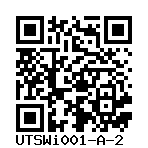FA1-N
UTSWi001-A-2
General
Cell Line |
|
| hPSCreg name | UTSWi001-A-2 |
| Cite as: | UTSWi001-A-2 |
| Alternative name(s) |
FA1-N
|
| Cell line type | Human induced pluripotent stem cell (hiPSC) |
| Similar lines |
|
| Last update | 4th June 2024 |
| User feedback | |
Provider |
|
| Generator | University of Wollongong (UOW) |
External Databases |
|
| BioSamples | SAMEA115432923 |
General Information |
|
| * Is the cell line readily obtainable for third parties? |
Yes Research use: allowed
Clinical use: not allowed
Commercial use: not allowed
|
| Subclone of | |
Donor Information
General Donor Information |
|
| Sex | male |
Phenotype and Disease related information (Donor) |
|
| Diseases | A disease was diagnosed.
|
| Family history | none |
| Is the medical history available upon request? | limited |
| Is clinical information available? | limited |
Other Genotyping (Donor) |
|
| Is there genome-wide genotyping or functional data available? |
No
|
External Databases (Donor) |
|
| BioSamples | SAMEA115425256 |
Ethics
Also have a look at the ethics information for the parental line
UTSWi001-A
.
| For generation of the cell line, who was the supplier of any recombined DNA vectors or commercial kits used? |
hIPSC Derivation
General |
|
|
The source cell information can be found in the parental cell line
UTSWi001-A.
|
|
Reprogramming method |
|
| Vector type | Non-integrating |
| Vector | Sendai virus |
| Is reprogramming vector detectable? |
No |
Vector free reprogramming |
|
Other |
|
| Derived under xeno-free conditions |
Unknown |
| Derived under GMP? |
Unknown |
| Available as clinical grade? |
Unknown |
Culture Conditions
| Surface coating | Vitronectin |
| Feeder cells |
No |
| Passage method |
Enzyme-free cell dissociation
EDTA
|
| Medium |
Essential 8™
|
Characterisation
No characterisation data could be found for this subclone. Please open parental cell line UTSWi001-A .Genotyping
Karyotyping (Cell Line) |
|
Other Genotyping (Cell Line) |
Genetic Modification
| Genetic modifications not related to a disease |
|


Login to share your feedback, experiences or results with the research community.